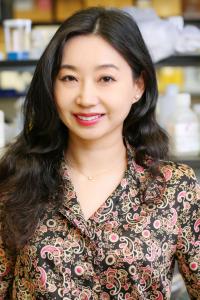Yang Lab
Location and Contact Information
Principal Investigator
The Yang lab studies the structure, function and regulation of ion channels in the eye, and the pathological mechanisms and treatment of their associated diseases.
Our recent work is focused on a family of calcium (Ca2+)-activated chloride (Cl-) channels named bestrophins, which are widely distributed from bacteria to mammals. Among the four human bestrophin paralogs, bestrophin-1 (Best1) and bestrophin-2 (Best2) have been found in the eye and linked to important (patho)physiological events. Best1 is located in retinal pigment epithelium, playing an essential role in generating a vision-related electrical signal named “light peak”. Over 250 genetic mutations in its encoding gene, BEST1, have been documented to cause a spectrum of at least five retinal degenerative diseases, including the early-onset form of vitelliform macular dystrophy, also known as Best disease. The patients are susceptible to progressive vision loss which may eventually lead to blindness, while no treatment is currently available. Best2 resides in non-pigmented epithelium of the ciliary body, participating in aqueous humor formation and drainage, which determine intra-ocular pressure (IOP). Best2 knockout mice exhibit abnormal aqueous humor homeostasis and a decrease of IOP. Importantly, as IOP must be properly maintained for the normal function of the eye and high IOP is a major risk factor for numerous eye diseases including glaucoma, Best2 represents a promising pharmaceutical target for lowering IOP.
We apply a multidisciplinary platform consisting of cryoEM, crystallography, electrophysiological recording, CRISPR/Cas9-mediated genome editing, and stem cell reprogramming/differentiation. Our previous works include solving the first Best1 and Best2 structures, deciphering their regulatory mechanisms and physiological roles, elucidating disease-causing mechanisms of BEST1 patient-derived mutations, and establishing gene therapy for Best disease.
